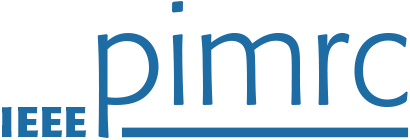Instructors
Dr. Giovanni Geraci, giovanni.geraci@upf.edu
University Pompeu Fabra, Spain
Giovanni Geraci (SM’19) is an Assistant Professor at University Pompeu Fabra in Barcelona, and the coordinator of the Telecom Engineering degree. He was previously a Research Scientist with Nokia Bell Labs and holds a Ph.D. from UNSW Sydney. He also held research appointments at SUTD in Singapore, UT Austin in the USA, CentraleSupelec in France, and Alcatel-Lucent in Italy.
He serves as an IEEE ComSoc Distinguished Lecturer, an Editor for the IEEE TWC and IEEE COMML, and the IEEE ICC’22 Wireless Comm. Symposium co-Chair. He is a frequent IEEE workshop organizer, has delivered over ten IEEE tutorials and workshop keynotes, and is co-Editor of the book “UAV Communications for 5G and Beyond” (Wiley – IEEE Press). He is co-inventor of a dozen patents, has written for the IEEE ComSoc Tech. News, and received international press coverage.
Giovanni was awarded two of the most competitive early-career fellowships in Spain: a “la Caixa Junior Leader” and a “Ramon y Cajal” Fellowship. He was named an Exemplary Reviewer for the IEEE TWC twice. He received the Nokia Bell Labs Ireland Certificate of Outstanding Achievement, the IEEE ComSoc EMEA Outstanding Young Researcher Award, and the IEEE PIMRC’19 Best Paper Award.
Dr. Adrian Garcia-Rodriguez, a.garciarodriguez.2013@ieee.org
Huawei France R&D, France
Adrian Garcia-Rodriguez (M’16) is a Senior Research Engineer at Huawei Technologies R&D (France). He received the Ph.D. degree in Electrical and Electronic Engineering from University College London (U.K.), and he was a Research Scientist at Nokia Bell Labs (Ireland) in 2016-2020. Adrian is a co-inventor of 27 patent families, for which he received the Nokia Bell Labs Ireland Certificate of Outstanding Achievement for the highest number of filed patents in 2019, and has co-authored 40+ IEEE publications with 1k+ citations.
Adrian has delivered ten between industrial seminars and tutorials, and organized six workshops at IEEE ICC, Globecom, WCNC, and PIMRC in the last 4 years alone. He was a speaker of the industrial tutorial “Drone Base Stations: Opportunities and Challenges Towards a Truly ‘Wireless’ Wireless Network”, which won the Most Attended Industry Program award at IEEE Globecom’17.
Adrian was also the recipient of the Best Paper Award in PIMRC’19 for his work on “Cellular UAV-to-UAV Communications”. Adrian was also named an Exemplary Reviewer for IEEE Commun. Letters in 2016, and both IEEE Trans. on Wireless Commun. and IEEE Trans. on Commun. in 2017.
Motivation
Drones—a.k.a. UAVs—are taking over many processes requiring efficient, automated, and flexible machines. For their whole ecosystem to take off, the wireless community is trying to address the fundamental challenge of providing reliable cellular service to this new class of mobile devices in both 5G and the future 6G networks. Simultaneously, the cellular communications industry is taking one step upward to the sky: integrating satellite communications in next-generation mobile networks with the ultimate goal of providing anything, anytime, anywhere connectivity. This trend is being followed closely by academia, with a tremendous effort in designing and optimizing the integrated terrestrial and non-terrestrialcellular network of tomorrow.
In light of the unprecented interest in this field, this one-of-a-kind tutorial blends our academic and industrial views to take a holistic approach to UAV and satellite cellular communications:
- Outside the classroom: A fresh look at the 3GPP standardization status and the performance of UAVs and satellites in 5G NR cellular networks: lessons learnt and essential guidelines.
- Inside the classroom: Distilling, among others, the fundamental tradeoffs in UAV-to-UAV communications, air-to-ground mmWave propagation, and the orchestration of integrated 3D networks in terms of spectrum sharing, traffic steering, and mobility management.
- A glimpse to the future: Projected 6G UAV and satellite use cases, requirements, and the potential disruptive technologies to make them a reality: AI for modeling and optimization, THz bands, aerial cell-free architectures, and the support of smart wireless environments.
Structure and content
Part I: UAV Communications in 5G NR (75 minutes)
- 5G NR UAV use cases, requirements, and dedicated features
- Sub-6 GHz 5G NR for enhanced UAV cellular support
- Tackling initial access, cell selection, and interference challenges with Massive MIMO
- mmWave 5G NR densification for UAV capacity boost
- Urban and suburban coverage via standard downtilted and ad-hoc uptilted cells
- D2D in the sky for UAV swarms
Part II: Non-terrestrial networks in 5G NR (60 minutes)
- Ubiquitous connection in underserved areas
- Sub-6 GHz direct and mmWave-relayed access with HAPs and LEO satellites
- Continuous hyper-connection in urban areas
- Intelligent spectrum allocation, interference mitigation, and mobility management
- Opportunistic traffic offloading, UL/DL decoupling, and multi-connectivity
- Open questions for a scalable 3D network integration and orchestration
Part III: UAV and Non-terrestrial communications in 6G (45 minutes)
- Projected use cases and requirements in the 2030s
- Disruptive 6G technologies for aerial and spaceborne communications
- Promising results for Terahertz, cell-free, and reconfigurable wireless systems
- AI for channel modeling, mobility management, and network optimization


